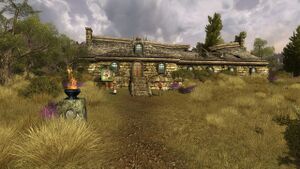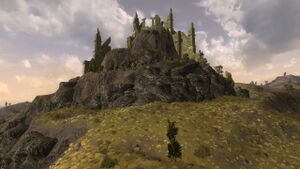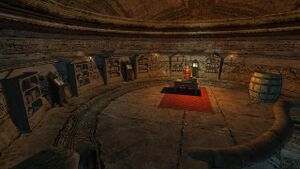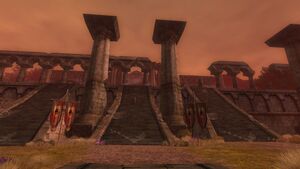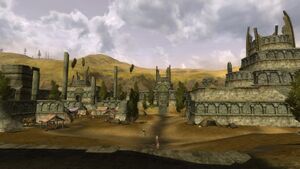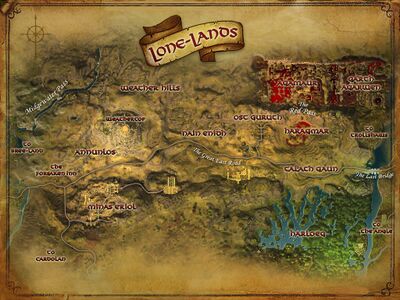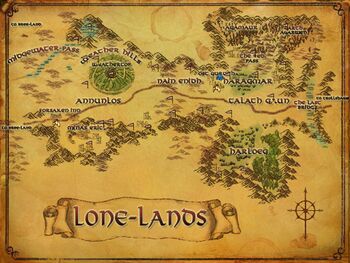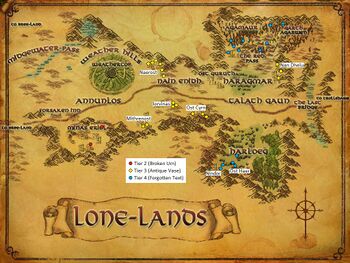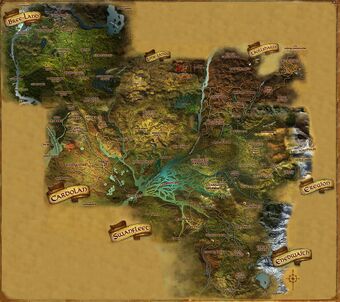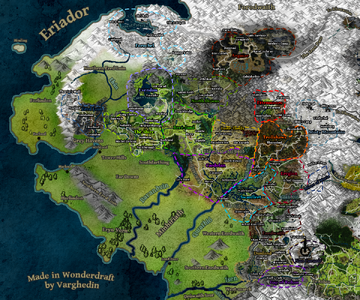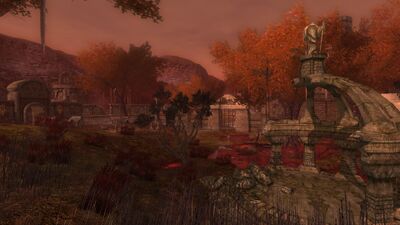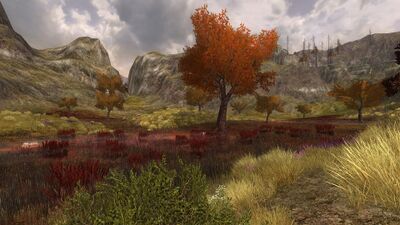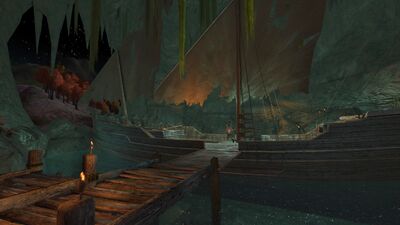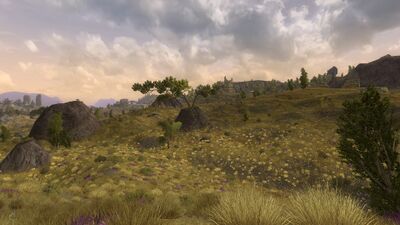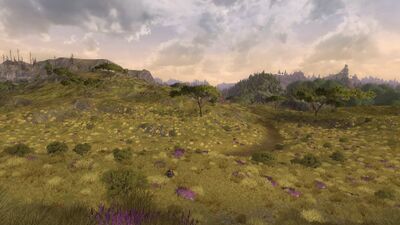Lone-lands
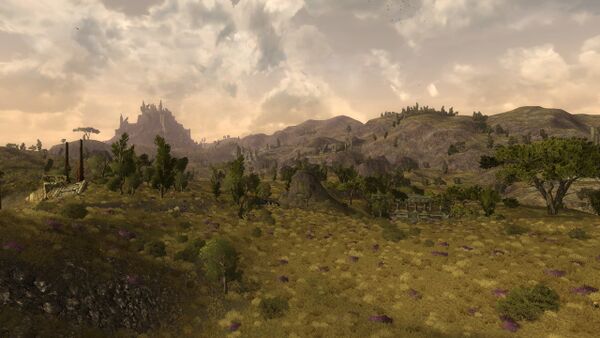
The Lone-lands is a region found within the land of Eriador.
The Lone-lands are located between Bree-land and the Trollshaws, north of Cardolan, and along the Great East Road. In ancient times, this was part of the Kingdom of Rhudaur, but today the Lone-lands are little more than a savage wilderness. Recently, hordes of goblins, half-orcs, orcs, crebain and wargs have overrun the land, in service to the White Hand and Angmar. In its northeastern corner, the Créoth tribe of hill-men worship, sacrifice, and defile the land in the name of the Red-maid. The Eglain, however, stand firmly against these threats, as these wild-men have grown adept to life outside of civilization and are prepared to defend the ruins which have supplied them their very livelihood.
The most regal and prominent feature of the Lone-lands rises above the road like a symbol of the land’s sad legacy: Weathertop. Once known as Amon Sûl (Sindarin for Hill of the Wind), it was a proud tower of vision and vigilance and the home of the strongest palantír of the north. However, it fell in battle to the Witch-king of Angmar, and has sat derelict in the wild since then. Today, countless orcs prowl through the place’s rubble, and the few Rangers who defend it cannot often deter them.
- Levels: 22 - 35
- Factions: The Eglain
- Crafting: Journeyman, Expert, Artisan
- Neighbouring: Bree-land, Trollshaws, Cardolan
- Introduced:
 The Lord of the Rings Online: Shadows of Angmar, April 24th, 2007
The Lord of the Rings Online: Shadows of Angmar, April 24th, 2007
Locations
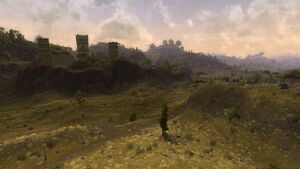
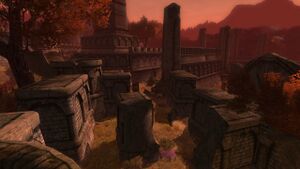
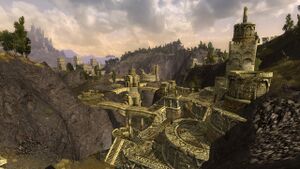
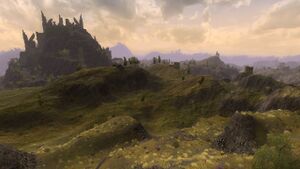
(Ordered by main quest-level)
The Weather Hills
- Camp: Candaith's Encampment: Stable-master, Camp Site Fire
- PoI: Weathertop - known as Amon Sûl
- Quests: mainly 22 - 23
- Tavern: The Forsaken Inn: Stable-master, Milestone, Mailbox, Tasks Bulletin Board, Tavern Keep/Healer, armour and weapon vendors
- Dungeon: Inn of the Forsaken
- Quests: mainly 22 - 27
- Camp Site Fire
- Quests: mainly 23 - 24
- Town: Ost Guruth:
- Stable-master, Milestone, Mailbox, Reflecting Pool, Skirmish Camp, Tasks Bulletin Board, Bard, Grocer, Healer, Provisioner, armour and weapon vendors
- Crafting: Camp-fire, Farmlands, Forge, Oven, Study, Workbench, Supplier, and trainers
- Factions: The Eglain
- Dungeons: Iorvinas: Heavy Armoursmith
- Quests: mainly 25 - 30
- Quests: mainly 27 - 30
- Camp: Dol Vaeg: Travelling Vendor, quests
- PoI: The Last Bridge
- Quests: mainly 28 - 29
- Camp: Ost Haer: Camp Site Fire
- Quests: mainly 29 - 31
- Camps:
- Quests: mainly 30 - 32
- Instances: Garth Agarwen: Arboretum, Barrows, and Fortress
- Quests: 32 - 35 - Fellowship - Instances
|
For more detail, see Lone-lands Quests |
For more detail, see Lone-lands Deeds |
For more detail, see Lone-lands Titles | |||||||||||||||||||||
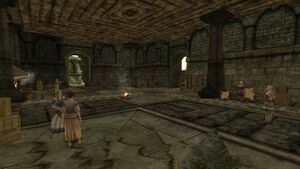 Crafting Tier(s):
Resource Locations:
MapsGallery
|
|||||||||||||||||||||||
